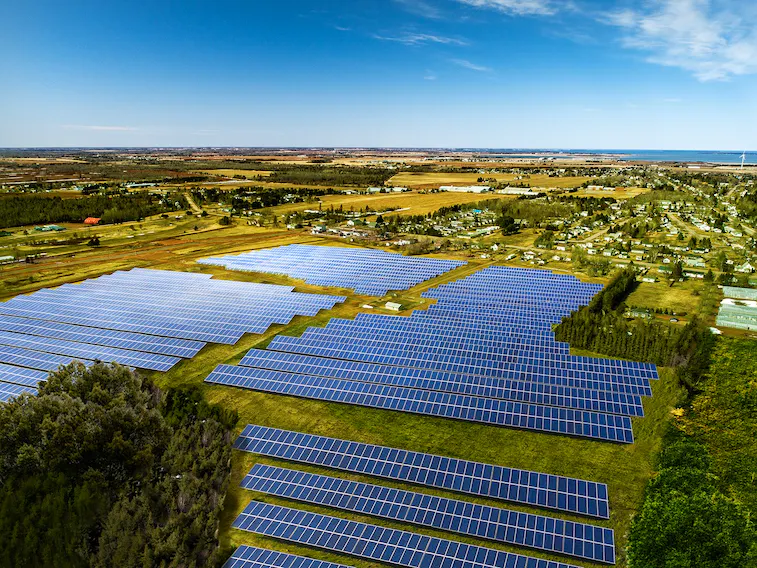Saltwire | Exciting time in the energy world: Solar panels increasing in popularity in P.E.I. thanks to recent rebate programs

Rafe Wright – Journalist
CHARLOTTETOWN, P.E.I. — P.E.I. has one of the fastest-growing solar markets in Canada, and the demand is only growing.
The price of solar power in Canada is about 90 per cent cheaper than it was in 2010. As a result, in P.E.I., requests for solar panel installations have increased exponentially, said Julian Boyle, president of Switch Charlottetown during an interview with SaltWire Network on Aug. 5.
“Solar is now the cheapest form of energy in 90 per cent of the world,” said Boyle. “It’s phenomenal just how many solar incentives there are across the country and now locally, too.”
In June, the federal government announced a solar energy rebate program offering up to $5,000 to Prince Edward Island residents looking to install solar panels. This, combined with the provincial rebate programs offered, can provide homeowners with up to $10,000 in financial aid.
In the past, solar power was seen as an expensive luxury. But with the rising cost of oil over the last year, it now makes more sense to invest in solar energy, said Boyle.
“It’s cheaper now to build new solar (grids) than run existing-coal plants,” he said.
It’s not just that the price is dropping, the technology is improving as well.
Solar panels also allow for the option to store unused power. Depending on the type of system, this is beneficial to homeowners during the winter months, when more electricity is generally used and when power outages are more common.
Storing power can also greatly reduce the price of heat, as many homeowners in the province have invested in electrical heating systems in recent years.
“This winter is going to be a big deal for a lot of people when they start to fill up their oil tanks and it goes from $700 to $1,500, maybe more,” said Boyle.
Often people think the solution is buying backup generators from hardware stores, which are very expensive and often sit idle, he added.
“If you have the solar system and energy storage, it’s saving you money every day.”
Panels installed
Romeo Gallant from Hunter River began looking into solar energy almost 40 years ago. He finally had panels installed last October after government incentives began to be announced.
“I waited until the time was right to jump on the bandwagon,” said Gallant.
The process took about eight months from start to finish. Gallant had to pay for inspections to his home and now pays a monthly lease of $140 for the panels.
Since having the panels installed, he has saved over $1,400 in electricity bills.
“When you get your electrical bill and it’s about $36, it’s a pretty good feeling, and that’s with a hot tub, too.”
Although the process was lengthy, it was understandable considering the increased demand in the last year particularly.
“The demand is so high they just can’t get enough guys to install, which is actually a good thing if you think about it.”
The best advice is to plan well ahead of time. If the goal is to have panels installed by spring, start in August and have the paperwork done by October. Staying in communication with contractors is important as well, as with the high demand it can be easy to get overlooked.
“If you start now, by the time retirement comes your system will be paid off, you’ll be well established, and to be retired and have a $20 electrical bill is pretty nice,” said Gallant.
Solar farms
The shift to solar energy is not just happening commercially. This year, the city of Summerside invested $69 million towards the construction of Sunbank solar farm, an 85-acre lot which will include more than 48,000 panels by the end of the year.
The panels will be capable of producing 21 megawatts of energy that can be stored in one of the five tractor trailers loaded with batteries on the farm. The batteries will be able to store energy that can be used during power outages, Greg Gaudet, director of municipal services for the city of Summerside told Saltwire Network on Aug. 8.
“This puts us as the lead (province) in the country that doesn’t have access to large hydro or nuclear plants. That’s quite significant,” said Gaudet.
Currently, 42 per cent of Summerside’s energy comes from wind farms. When completed, the new farm will provide 23 per cent of the city’s power, making Summerside 65 per cent powered by wind and solar.
The panels, which have a 35-year life span, are expected to be completed by October, said Gaudet.
“Things are progressing well, it’s an exciting time in the energy world.”
Rafe Wright is a Local Journalism Initiative reporter, a position covered by the federal government. He writes about climate change issues for the SaltWire Network in Prince Edward Island and can be reached by email at [email protected] and followed on Twitter @wright542.
